The Ultimate Guide to Tree Removal: Everything You Need to Know

Tree removal is a critical aspect of maintaining a safe and aesthetically pleasing landscape. Whether due to disease, storm damage, or the tree simply outgrowing its space, knowing when and how to remove a tree is essential. In this comprehensive guide, we will explore the reasons for tree removal, the process involved, safety considerations, and the importance of hiring professionals.
Why Tree Removal is Necessary
Safety Hazards
- Dead or Dying Trees: A tree that is dead or in decline poses a significant risk of falling branches or the entire tree collapsing, which can cause injury or damage to property.
- Storm Damage: Trees damaged by severe weather can become unstable, with limbs that are at risk of breaking off.
- Obstruction: Trees that interfere with power lines, driveways, or buildings can create hazardous situations.
Health of Other Trees
- Disease and Pests: Trees infected with diseases or infested with pests can spread these issues to nearby healthy trees.
- Competition: Sometimes, trees can overcrowd an area, competing for sunlight, water, and nutrients, which can hinder the growth of other plants.
Aesthetic and Functional Reasons
- Landscape Design: Removing a tree can open up space for new landscaping projects, improving the overall appearance and functionality of your yard.
- Property Value: Well-maintained landscapes with healthy trees can significantly boost property value.
The Tree Removal Process
- Initial Assessment A professional arborist will evaluate the tree to determine the best course of action. This includes examining the tree’s health, stability, and proximity to structures and utilities.
- Obtaining Necessary Permits In some areas, tree removal requires permits from local authorities. A professional tree removal service can help navigate the permitting process, ensuring compliance with local regulations.
- Preparing the Site The area around the tree must be cleared of any obstacles to ensure a safe removal process. This includes moving vehicles, outdoor furniture, and other items.
- Cutting Down the Tree Felling: If space allows, the tree is cut down in one piece. This involves making precise cuts to control the direction of the fall. Sectioning: In tighter spaces, the tree is removed in sections. A climber or a crane is used to cut and lower branches and trunk pieces safely.
- Stump Removal After the tree is cut down, the stump remains. Stump removal or grinding is often necessary to prevent future growth and eliminate a potential tripping hazard.
- Cleanup and Disposal The final step involves cleaning up the debris, cutting the wood into manageable pieces, and disposing of or recycling it appropriately.
Safety Considerations
Tree removal is a dangerous task that requires expertise and proper equipment. Key safety considerations include:
- Protective Gear: Arborists wear helmets, gloves, and eye protection to safeguard against injuries.
- Equipment: Using the right tools, such as chainsaws, ropes, and harnesses, ensures the job is done safely and efficiently.
- Environmental Hazards: Awareness of power lines, buildings, and other obstacles is crucial to prevent accidents.
- Team Coordination: Effective communication among the team is vital for a smooth and safe operation.
Benefits of Professional Tree Removal Services
Expertise and Experience
Professional arborists have the expertise and experience to safely and efficiently remove trees. They are trained to handle complex and hazardous situations, ensuring the job is done correctly.
Proper Equipment
Tree removal requires specialised equipment such as chainsaws, ropes, cranes, and wood chippers. Professionals have access to the necessary tools and know how to use them safely.
Safety and Risk Management
Tree removal can be dangerous, especially for large or damaged trees. Professionals follow strict safety protocols and have insurance coverage to manage risks, protecting both themselves and your property.
Efficient and Thorough
Professional tree removal services are efficient, completing the job quickly and thoroughly. They handle all aspects of the removal, including stump grinding and debris cleanup.
Compliance with Regulations
Professionals are familiar with local regulations and can ensure that the tree removal process complies with all legal requirements, including obtaining necessary permits.
Cost of Tree Removal
The cost of tree removal varies based on several factors, including the size and height of the tree, its location, the complexity of the removal, and any additional services such as stump grinding. On average, tree removal can range from £200 to £2,000. Obtaining a detailed quote from a professional service will give you a clear understanding of the costs involved.
Why Choose Chigwell Tree Services for Tree Removal
- Certified Arborists Our team of certified arborists has extensive training and experience in tree removal. We are dedicated to providing top-quality services tailored to your needs.
- Local Expertise With in-depth knowledge of local tree species and conditions, we ensure effective and safe tree removal for properties in Essex and London.
- Commitment to Safety We prioritize safety in all our services, following strict protocols to protect our team, your property, and the surrounding area.
- Customer Satisfaction We strive to exceed your expectations and ensure your complete satisfaction. Our friendly and professional team is committed to providing exceptional service and achieving the best results.
- Transparent Pricing We offer competitive pricing and transparent quotes, ensuring you understand the costs upfront with no hidden fees.
Conclusion
Tree removal is a necessary and often complex task that requires careful planning and execution. Whether for safety reasons, the health of other trees, or aesthetic purposes, understanding the process and the importance of professional help is crucial.
